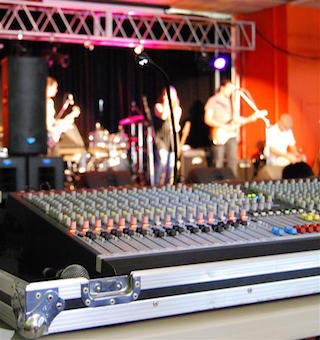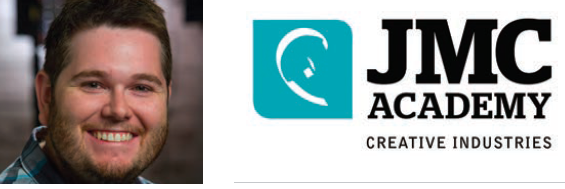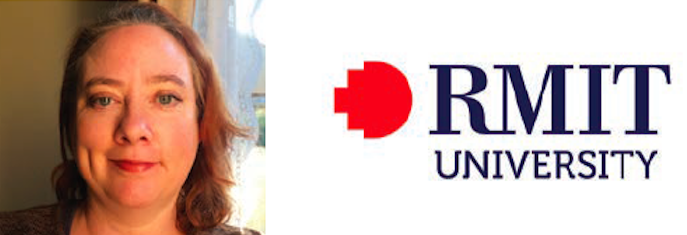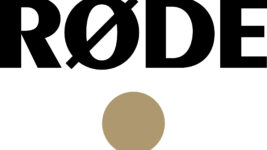News
4 Jul 2018
Education

Subscribe to CX E-News
Education
In this issue, CX surveys the types of formal education on offer for those seeking to learn about live production – what they teach, how that curriculum is set, and what pathways to employment are provided. It boils down to two flavours – degree courses offered by a variety of private institutions and universities, and the nationally controlled Cert IV and Diploma of Live Production and Technical Services delivered by the vocational training (and occasionally university) sector around Australia.
While the educators interviewed in these pieces were coincidentally all based in Melbourne, their observations apply nationally. A simple web search for the Cert IV or Diploma of Live Production and Technical Services will bring up a list of institutions providing it in your area.
Both the School of Audio Engineering (SAE) and the Australian Institute of Music (AIM) Sydney offices were contacted with a list of questions about any live production training they provide, but both declined to respond.
Deb Hatton, Teacher and Trainer, Lighting, Stage Management, and Production Management units, Production Lighting for Live Events short courses, RMIT.
Deb Hatton has an extensive background in lighting, stage management, production management, and AV. Still working in the industry, Deb also teaches production management as part of RMIT’s delivery of the Cert IV and Diploma of Live Production and Technical Services.
Job Ready
I am very keen on making my students as job-ready as possible. As well as fulfilling all of the compliance of the course units, I have some absolutes that I drum into them. The first is cable management. Next is comms; headsets and cueing, and communication in the context of live performance.
I’m also adamant about using correct stage terminology; Prompt Side and OP, stage right and stage left, upstage and downstage. And then Ohm’s Law. They’re things that a potential employer needs you to have when you walk in the door. From there, you have to build up other skills. It’s tricky to teach 25 adults who are at different levels, but that’s the job.
Course Structure
The Cert IV and Diploma of Live Production and Technical Services is a federally mandated training package, and wherever it’s delivered it has to have 16 units in it. But there is some variation on which 16 units are chosen and how they’re taught.That’s why different institutions will have a different ‘flavour’ to their course, for want of a better word. Part of the job is to translate these units and make them as relevant as possible to actually working in live production.
Content
RMIT have what they call the Program Advisory Committee. They sit in a round table with representatives like my coordinator Rebekha Naim, teaching staff, and interested parties from the industry like Show Technology, MCEC, or Harry the hirer. Everyone offers advice about what should be delivered in the course. But because the units are controlled at a federal level, it can take a couple of years for the course to catch up with any major cultural or technological changes in the industry.
The RMIT live production technical services program teaches lighting, video,
projection mapping, and a lot of audio, with live audio a particular focus. We also cover broadcast in the newly finished television studios that the students will soon be doing their practical work in, filming live bands, for example.
I teach production management, and I have some background in audio and visual as well, so I can correct students up if they are doing something wrong. And then there’s a specific sound production course with no lighting or visual, and a screen and media course.
Pathways to Employment We see our graduates picked up by the industry pretty quickly. The industry in Melbourne is so prolific that there’s a need for new workers. This year, there’s a few students that are already working while studying, at places like Gig Power, Staging Connections, and Active Lighting, and events like the Comedy Festival and White Night.
Luke Hill, Head Audio Lecturer, JMC Academy Melbourne

In addition to his long experience as an educator, Luke Hill has been a studio and live engineer for bands including Eskimo Joe, Amity Affliction, and The Drones, as well as contestants from X-Factor and Australia’s Got Talent. He has also worked on sound for film and radio for National Geographic and the Southern Cross Austereo Network.
Content
JMC’s Audio Engineering and Sound Production degree and diploma have a strong hands-on live sound component, from a basic small café set-up to a big pub gig. We also cover large scale system design and operation to the level of a venue like the Crown Palladium.
Hands-On
Because we’re a creative arts school, we’re lucky to have a music department and a small auditorium running regular performances, so our audio students set-up and mix those gigs. We also do things off site; at the moment, we’re taking the students to Sound City in Spotswood, which is a rehearsal facility with a performance space. We also get our audio students to do production for the JMC performance nights at venues like the Bendigo Hotel, Memo Music Hall, and The Tote.
Core Principles
Students graduating JMC’s degree or diploma have a very good understanding of PA system signal flow. They graduate with the ability to spec a PA system for a venue, including putting together all of the documentation required. They have a strong grounding in live mixing, the principles of mixing music, a base understanding of lighting, and elements of production and stage management. We make sure they get practical experience in all of these areas.
Pathways to Employment
In developing our course material, we consult with industry, and many of our lecturers also work for organisations like the MCEC, Mediatec, and Staging Connections. I’ve seen a lot of our graduates start work at the MCEC, Staging Connections, Audio Visual Dynamics, and some of the smaller production companies around Melbourne. JMC has built a good reputation with the industry in Melbourne, which greatly benefits our graduates.
Chris Dickie, Box Hill Institute


Chris Dickie is an ARIA award-winning producer and engineer, with a long list of international album production and recording credits.
Content
I teach live sound and studio recording techniques for Box Hill Institutes’ Bachelor of Sound Production, a three year degree with sound production as its main focus. The live sound component includes analogue and digital audio, microphone selection and operation, wireless microphones, and the set-up and operation of PAs.
Hands-On
Box Hill has a music performance stream and it is to the benefit of both the music performers and the live sound students that we run a weekly simulated workplace where the students provide live sound reinforcement for the performance groups. It runs in a similar way to how a walk-in might work at live venues around Melbourne. We also have a small PA that students use for lunchtime performances at a variety of locations between the Box Hill, City, and Lilydale campuses.
The students also have the opportunity to work on internal events. Sometimes they’re like a corporate event, sometimes graduation and fashion events, sometimes local school big bands in Box Hill’s Fountain restaurant, or Open Day events.
The end-of-year event sees the students transform what would normally be an industrial training facility into a three-day fashion and musical theatre event, working alongside the industry professionals who are supplying the equipment. The students spec and plan the event and run all aspects of stage management, sound, and lighting.
Vocational Placement
We encourage external work placement. Vocational placement gives the students the opportunity to see what is expected of them in the workplace. They also have the opportunity to begin building a network, and they often find themselves working with crew who are ex-Box Hill students.
Facilities
Our live sound equipment includes a DiGiCo SD11, Avid Venue Profile with FOH and Stage Racks, Allen & Heath QU24, Soundcraft GB4, Midas Venice plus a few smaller analogue desks, two Yamaha O1V96s (one fitted with a Dante card), Sennheiser wireless mics and IEMs, a variety of self-powered speaker boxes and subs, and a variety of passive boxes and amps.
Our new performance venue, recording studio complex, and rehearsal facilities currently under construction will be running a d&b audiotechnik line array installed by JPJ and a Midas M32 desk, as well as a nice new lighting rig.
Our recording studios are a partnership with Sing Sing Studios. Studio A will have the SSL K Series 72 input desk, a large performance space with three iso booths, 5.1 Quested monitoring, 5.1 Genelec monitoring, and a lot of beautiful analogue mic pres, signal processing, and effects. Studio B will be a 32 input API 1608, Genelec stereo monitoring, three room recording space, and an excellent selection of analogue mic pres, signal processing, and effects. Studio C is an AVID S6 post production and foley studio, although it can easily record music projects.
Our three production suites include one Focusrite RED4 pre that can connect via Dante to pretty much anywhere in the facility. They also have a selection of vintage and new synths and drum machines, Sennheiser microphone kits, UAD Apollo interfaces and a smaller selection of beautiful analogue mic pres and signal processing.
Jamie Henson, Sessional Lecturer – Live Production and Technical Services, Costume for Theatre Arts and Specialist Makeup, Melbourne Polytechnic


Over four decades, Jamie Henson has worked in almost every aspect of live theatre and production, including as an actor, technician, stage manager, lighting designer, technical coordinator, operations manager, usher, FOH manager, production manager, and producer.
Melbourne Polytechnic run several courses in performing and dramatic arts, including the Diploma of Live Production and Technical Services. They have several cohorts because there are two electives that also cover costume for performance, with specialist makeup based in the film and TV course.
Facilities
Our facilities include the 117 seat David Williamson Theatre, running over 200 lighting fixtures including LEDs and movers, and seven different lighting desks. FOH sound is through an Allen & Heath digital desk with other desks for foldback and seven Mac laptops for QLab playback.
The vision system incorporates three Canon cameras, Blackmagic ATEM mixer and six LCD projectors. We use this venue for sound and music performance platforms, which are a collaboration with the Cert IV to Advanced Diploma courses in Music.
David Williamson Two is a 99-seat space downstairs running between 36 and 96 dimmers. We have an area in another building, which has patching, 24 dimmers, and a fixed grid at 4.2 meters, which we use for sound and music performance platforms, shows and projects. It’s a sound-proofed studio, which has simple lighting and sound control.
We’re very well resourced with rostrums, drapery, and truss. We’ve got our own workshop for demonstrating rigging, tying knots and applying slings to truss
on chain blocks, a scenery workshop with portable battery drills, drill presses, drop saws, and hand tools, and a paint shop.
Content
We’re bound by the national code in the elements and criteria we deliver for each unit. Every year we must validate two units from the Diploma. That process includes somebody from industry, the person who’s delivering the unit, a mediator, and a note taker.
What we want to hear from industry is if the unit content is still valid. We can’t change the elements in it, but we can report back to the national body IBSS that we want to rescope the course. We regularly get feedback from companies like Harry the hirer, Resolution X, and Moving Light Productions, and Victorian Opera, with our vocational secondments running in September.
What industry doesn’t usually understand is that we’re set by a national code for the unit content, and we’re also limited by hours for delivery. At the moment we’re delivering the Diploma 25 hours per week, in 34 weeks over a year. The time period is tight. Roughly it’s two and half-hours to three hours per unit a week. Some of the units are only one semester.
Industry wants our students to have hands-on training, and we do it with equipment as much as possible. We have one counter-weight fly-line, and I would like a full system, but that’s resources. I have in past years gone into the Comedy Theatre and Athenaeum Theatre to show classes how to use a complete system.
Vocational Placement
We set up two weeks of vocational placement for our students with companies like Resolution X, Harry the hirer, Moving Light Productions, Lighting Lab, Imported Theatre Fabrics, and Scenic Studios. Dates aligning with their workload to do this are the big problem; we don’t send our students out at all during the semester.
We only have 34 weeks of contact, and it’s quite intensive, so vocational placement happens during the holidays. Some students choose to work on the Adelaide Festival or the Fringe Festival, but what they miss from the course is equally as valuable as what they learn on-the-job.
Pathways to Employment
What we don’t do is say to our students ‘You do these units, and you’ll be employed’, because it’s impossible to say they will get employment. These courses help you – they outline an educational and career pathway. Some students want to go and be lighting or set designers. Some go to the Victorian College of the Arts, get their BA, and do four years as an LD’s assistant. Some go and start working the bump-ins and bump-outs. Some go into animation, or company management.
Next semester I’m teaching a Diploma of Events with three units of technical. The industry is not just live production and technical services. Some of our production students go on to work on festivals, which give them a broader understanding of what the entertainment industry is about. It’s not all proscenium arch theatres and theatre companies. There’s festivals, community events, opening and closing ceremonies, and sport. They’ve got to think how they can apply their audio, lighting, and visual skills in a broader variety of contexts.
This article first appeared in the print edition of CX Magazine July 2018, pp.24-26. CX Magazine is Australia and New Zealand’s only publication dedicated to entertainment technology news and issues. Read all editions for free or search our archive www.cxnetwork.com.au
© CX Media. Main image courtesy WSI TAFE NSW
From the same edition: Formal training is acronym heavy – Why ‘on-the-job’ training is so popular See also ‘Employment’ in CX Magazine, May 2018 here
Subscribe
Published monthly since 1991, our famous AV industry magazine is free for download or pay for print. Subscribers also receive CX News, our free weekly email with the latest industry news and jobs.








